(Prices correct as of today’s date, are updated daily, are subject to change and represent genuine availability at time of update).
Cruise only holidays are financially protected by ABTA. Fly cruise holidays are financially protected by Royal Caribbean International under ATOL number 3088
Please click here to check the essential travel requirements before booking this cruise.
Want to add a hotel stay or change your flights?
Just call our team of cruise specialists to help build your dream cruise holiday today!
Prices based on 2 people sharing. Cruise only price does not include flights. Fly-cruise price may vary by chosen UK airport.
Itinerary
Baltimore, Maryland
Baltimore is the colourful, diverse city that is Maryland's largest city and economic hub. It is known for its beautiful harbour; quirky, distinct neighbourhoods; unique museums and the world-renowned Johns Hopkins Hospital to the east with the University of Maryland Medical Centre to the... Read More
Baltimore, Maryland
At Sea
Boston, Massachusetts
Saint-John, New Brunswick
At Sea
Halifax, Nova Scotia
Sydney, Nova Scotia
At Sea
At Sea
Baltimore, Maryland
What's Included with
Royal Caribbean International
One of the main benefits of a cruise holiday is not having to worry about all the finer details - everything is taken care of in advance, so your only job is to relax and enjoy the experience!
Accommodation, food, soft drinks and refreshments are all included and enjoy speciality restaurants at a supplementary cost. You can also sit back and relax by enjoying on-board entertainment, activities and facilities. Fancy a late night dip in the pool, a spin on the roulette wheel or an evening out at the ship’s theatre? You’ll be spoilt for choice!
There are plenty of family-friendly options on board many Royal Caribbean cruise ships, too. A host of enjoyable youth programmes ensure your whole family will have a fantastic time while sailing to your exciting destination.
Accommodation
Breakfast, lunch, dinner and snacks in a choice of included dining venues
Entertainment throughout the day and evening
Use of swimming pools, hot tubs, fitness centre and leisure facilities where available
Return flights included from a choice of UK airports (fly cruise bookings only)
Port taxes
Selected hot drinks, iced tea, lemonade, juices, and water in selected venues
Porterage of luggage from port to cabin
Youth programmes for babies to 17-year-olds
Sailaway parties, themed nights and deck parties
Shuttle service to and from ports and airport where available
Everything you need right at your fingertips! Includes accommodation, meals, entertainment and onboard activities. Plus, drinks such as water, squash, tea and coffee are also free of charge.
Explore Vision of the Seas





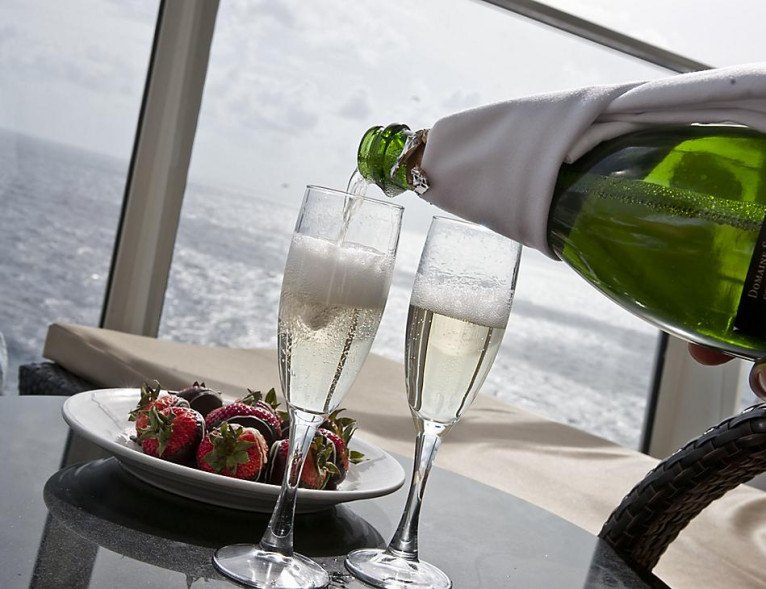



Izumi
THE HOTTEST SUSHI SPOT AT SEA
From delicious sushi rolls to fresh sashimi and nigiri, Izumi serves up an exotic Asian-inspired dining experience. Savour izakaya-style appetisers and rolls that range from classic to imaginative. No matter what you order, you’re in for a far out, Far East feast filled with incredible flavours from Tohoku to Tokyo.
Attire: Smart Casual
How to purchase: Cruise Planner or Onboard
MENU HIGHLIGHTS
At Izumi Sushi, indulge in a four-course meal that includes one starter, two mains and one dessert. From the starters list, don’t miss the shrimp firecracker spring roll, served golden-fried to perfection and stuffed with shrimp, crabmeat, and the perfect balance of sambal chilli to cream cheese. For your main course, if you’re dining with an appetite, get your sushi fix with one of the chef’s signature rolls — foodies love the baked snow crab and salmon dynamite roll, which fuses cool cream cheese and cucumber with spicy mayo, garlic-chilli oil, citrus, and a decadent champagne sauce. For dessert, choose between an assortment of creamy, chewy mochi, traditional green tea ice cream, a decadent chocolate lava cake or crispy sesame balls served with red bean and strawberry sauce.
PRO TIP
Dining with little ones? Ask for a kids’ menu. It’s got plenty of smaller-sized versions of Izumi’s sushi, teriyaki and more.














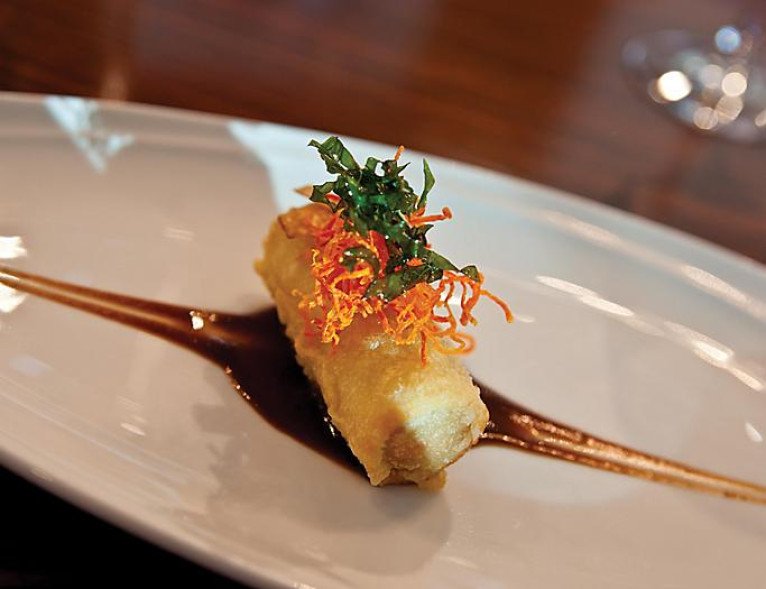



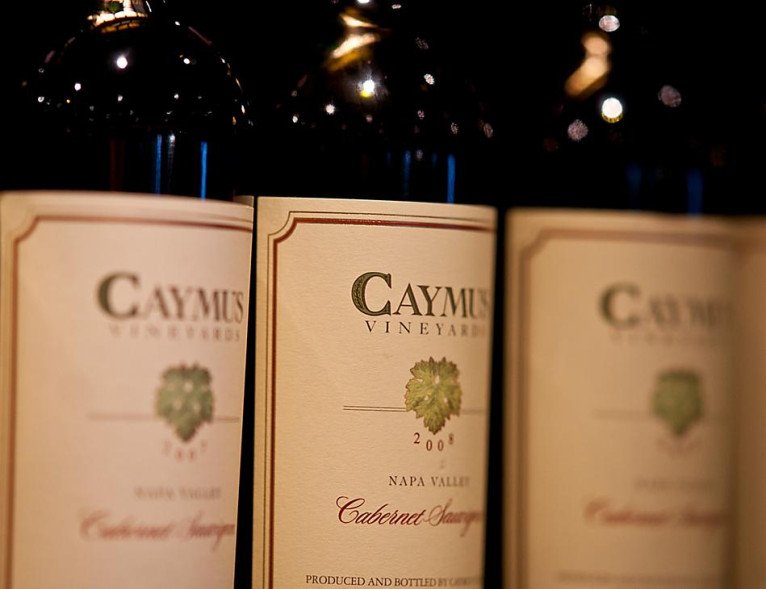


Perfect Day at CocoCay®
With stops at Perfect Day at CocoCay on every sailing, the best family vacation in the world extends from the ship to our award-winning private island. It’s 20 total waterslides onboard and on shore. Luxurious lounging at Coco Beach Club®. And party-pumping beats at the adults-only Hideaway Beach℠.
























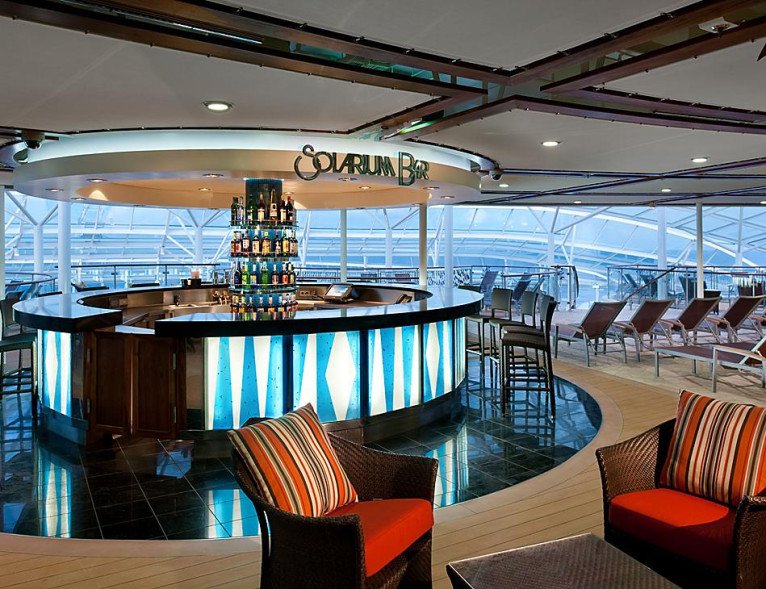
Shush! Silent Party
SILENT STEPPING
If you walk in and see a room full of people dancing in silence, you’ve come to the right place. Welcome to the Silent Party, where DJs battle it out in a contest of quiet beats you can only hear through your headphones. Just choose your music channel and groove to the rhythms.
Age Range: 18 and up




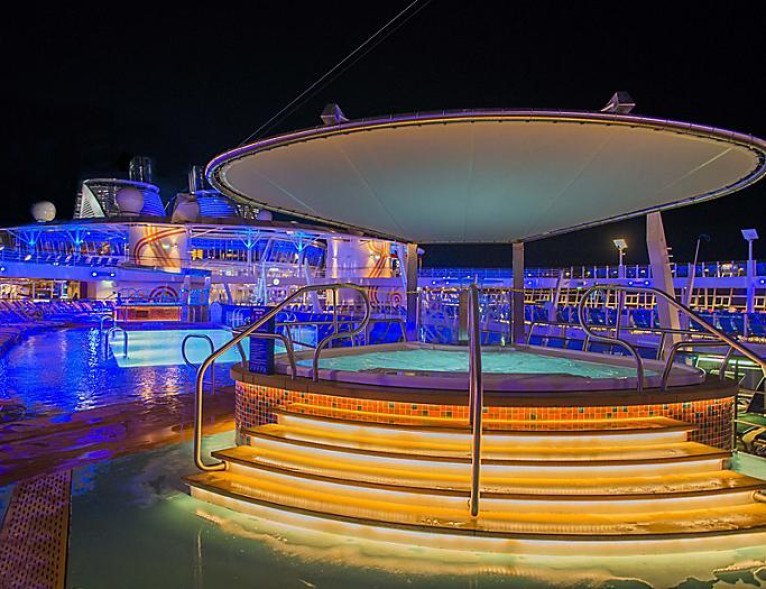

Pools
SWIM IT TO WIN IT
The pool deck is the place to be. And each ship has several to choose from. Bask in the sun or relax in the shade while you sip a cool tropical cocktail and enjoy the complimentary loungers and live music.
RESTRICTIONS
Potty Trained is required. Children can not be wearing a diaper.

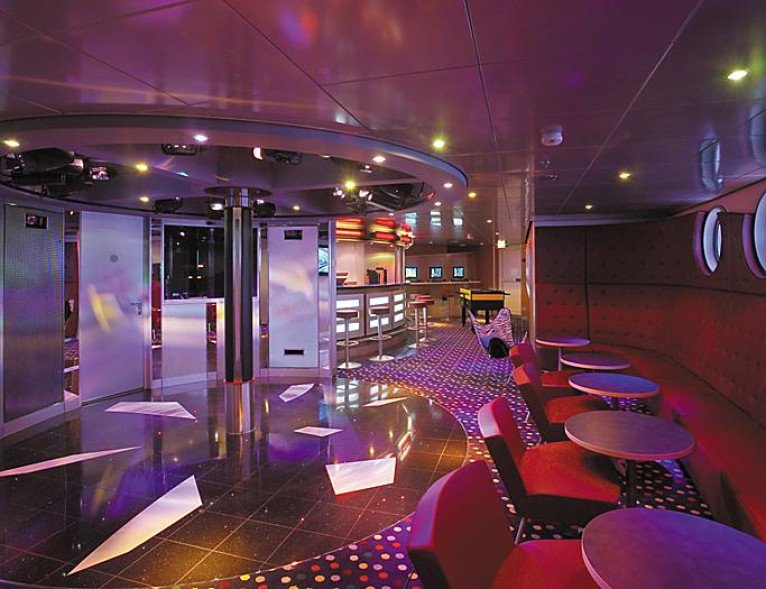
Adventure Ocean®
SMALL HANDS ON DECK
When the kids are happy, parents are happy. And our award-winning Adventure Ocean® Youth Program is designed with that in mind. Tiny travellers ages 3-5 will have an education blast in the Aquanauts group. The Explorers program keeps 6-8 year olds entertained with activities like themed parties and more. And learning is a thrillfest for 9-11 year olds in the Voyagers group.
Age Range: 3-11 years
Insider Tips: Adventure Ocean space varies by ship
Deck 12

- Izumi
Deck 11

- Concierge Club
- Viking Crown Lounge
Deck 10

- Adventure Ocean
- Teen Centre
- Video Arcade
- Nursery
- Running Track
- Vitality at Sea Spa and Fitness Centre
- Rock Climbing Wall
Deck 9

- Windjammer Café
- Movie Screen
- Whirlpools
- Main Pool
- Solarium
- Park Café
- Pool
- Vitality at Sea Spa and Fitness Centre
Deck 8

- Grand Suite - 1 Bedroom
- Junior Suite - x6 Accessible Suites
- Ocean View Suite (No Balcony)
- Grand Suite - 2 Bedroom
- Royal Suite - 1 Bedroom
- Owner's Suite - 1 Bedroom
- Spacious Ocean View
- Interior - x2 Accessible Staterooms
Deck 7

- Grand Suite - 2 Bedroom
- Spacious Ocean View Balcony - x2 Accessible Staterooms
- Spacious Ocean View
- Interior
Deck 6

- Masquerade Theatre
- Centrum Shops
- Photo Shop
- Café Latte-Tudes
- Ben & Jerry's
- Photo Gallery
- Art Gallery
- RC Online
- Chops Grille
- Schooner Bar
- Giovanni's Table
- Conference Centre A
- Some Enchanted Evening Lounge
- Diamond Club
Deck 5

- Masquerade Theatre
- Casino Royale
- Loyalty Desk
- Guest Services
- Shore Excursions
- Aquarius Dining Room
Deck 4

- R Bar
- Next Cruise
- Centrum
- Conference Centre B
- Conference Centre C
- Aquarius Dining Room
- Chef's Table
- Ultra Spacious Ocean View
- Connecting Oceanview
- Ocean View
- Interior
Deck 3

- Spacious Ocean View - x2 Accessible Staterooms
- Ultra Spacious Ocean View
- Connecting Oceanview
- Ocean View
- Interior
Deck 2

- Spacious Ocean View - x2 Accessible Staterooms
- Ultra Spacious Ocean View
- Connecting Oceanview
- Ocean View
- Interior
Vision of the Seas Cabins & Suites


Interior





Ultra Spacious Ocean View



Spacious Ocean View Balcony








Royal Suite - 1 Bedroom
Other dates available
28 Aug 2025
Royal Caribbean International
9 Night Canada & New England Cruise
from £1593pp
04 Sep 2025
Royal Caribbean International
9 Night Canada & New England Cruise
from £1448pp
11 Sep 2025
Royal Caribbean International
9 Night Canada & New England Cruise
from £1635pp
18 Sep 2025
Royal Caribbean International
9 Night Canada & New England Cruise
from £1389pp
02 Oct 2025
Royal Caribbean International
9 Night Canada & New England Cruise
from £1712pp
16 Oct 2025
Royal Caribbean International
9 Night Canada & New England Cruise
from £1476pp
03 Sep 2026
Royal Caribbean International
9 Night Canada & New England Cruise
from £1992pp
17 Sep 2026
Royal Caribbean International
9 Night Canada & New England Cruise
from £2066pp
01 Oct 2026
Royal Caribbean International
9 Night Canada & New England Cruise
from £2011pp
15 Oct 2026
Royal Caribbean International
9 Night Canada & New England Cruise
from £2169pp







-large_thumb.jpg)









